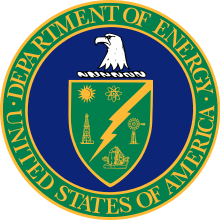University of Massachusetts Lowell Radiation Laboratory
| UMLRR | |
|---|---|
|
| |
 Location of UMLRR | |
| Operating Institution | University of Massachusetts Lowell |
| Location | Lowell, Massachusetts |
| Coordinates | 42°39′17″N 71°19′30″W / 42.65472°N 71.32500°WCoordinates: 42°39′17″N 71°19′30″W / 42.65472°N 71.32500°W |
| Type | tank |
| Power | 860420650 cal(th)/h |
| Construction and Upkeep | |
| Construction Cost | $1.2 million USD |
| Construction Began | 1974 |
| First Criticality | 1975 January 2 |
| Annual Upkeep Cost | $0.3 million USD |
| Staff | 2 |
| Operators | 6 |
| Technical Specifications | |
| Max Thermal Flux | 1.4e13 n/cm^2-s |
| Max Fast Flux | 9.2e12 n/cm^2-s |
| Fuel Type |
plate type 18 per assembly |
| Cooling | light water |
| Neutron Moderator | light water |
| Neutron Reflector | graphite, light water |
| Control Rods |
boron-aluminium (Boral) 4 per element |
| Cladding Material | aluminium alloy |
The Radiation Laboratory at UMass Lowell serves the Department of Applied Physics among others. The laboratory contains a 1 MW pool-type nuclear research reactor (UMLRR) that has been operating since 1974, a 300 kCi Co-60 gamma ray source, and a 5.5 MV Van de Graaff accelerator.
Reactor
First startup was January 2, 1975.[1] A budget for the reactor is not provided from the university or from the state; funding comes from grants and the United States Department of Energy.[2][3]
Availability of information
Unlike the vast majority of university research reactors, the UMass Lowell research reactor has no official homepage. In the ABC 2005 Primetime special "Radioactive Roadtrip," it was reported that staff did not respond to emails and a tour could not be arranged but that an archived version of a virtual tour could be found online. This virtual tour, however, only contained 2 (about 300 pixel wide) small pictures and was pulled from the website in 2002.[4] This is in contrast to other reactors, many of which have large clear pictures of the reactor pool and blue glow of the core on their homepages that are more detailed than what was ever on the Radiation Laboratory site.
In the ABC report, it was also reported that an officer of the Lowell (city) police force was not aware that the reactor was still in operation at all.[5]
Conversion to LEU
The UMass Lowell reactor has been one of the many research reactors to make the conversion from high-enriched Uranium to low-enriched Uranium as a part of anti-terrorism security measures.[6] The used HEU fuel was reportedly shipped to the Savannah River Site. The original shipping date was June 2002 but had been postponed many times. As of present-day the shipments have been made and the reactor is in operation with LEU.
References
- ↑ Nuclear Research Reactors in the World
- ↑ Velella, Rob. "Nuclear Fallout" from The UMass Lowell Connector (student newspaper). November 20, 2001. p. 1
- ↑ Binney, S.E.; S.R. Reese; D.S. Pratt (February 22, 2000). "University Research Reactors: Contributing to the National Scientific and Engineering Infrastructure from 1953 to 2000 and Beyond". National Organization of Test, Research and Training Reactors. Retrieved 2007-04-07.
- ↑ Virtual tour
- ↑ ABC News report
- ↑ http://www.osti.gov/bridge/servlets/purl/820521-ejbp9X/native/820521.pdf
